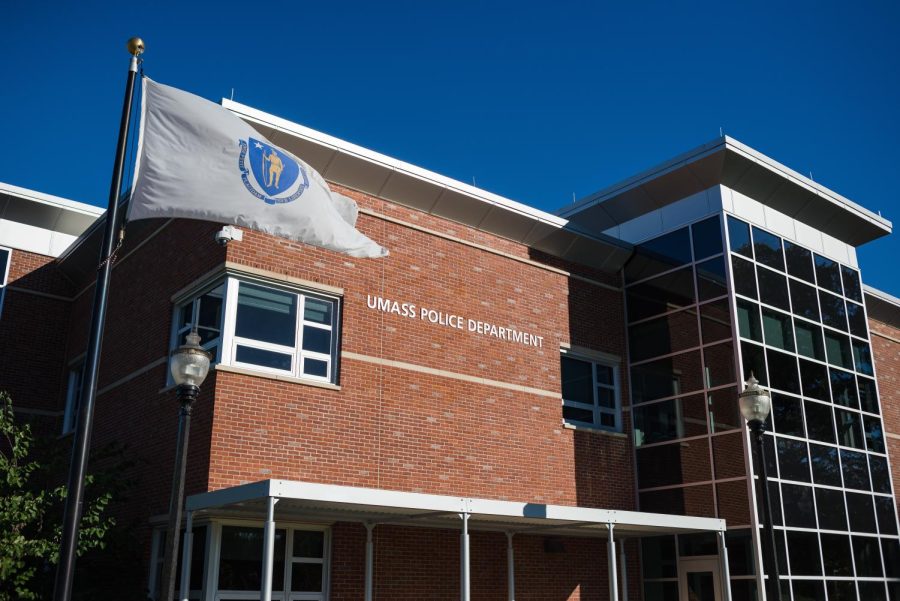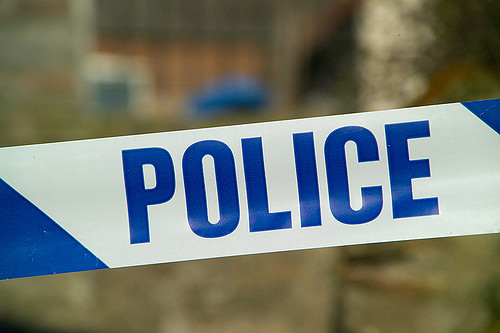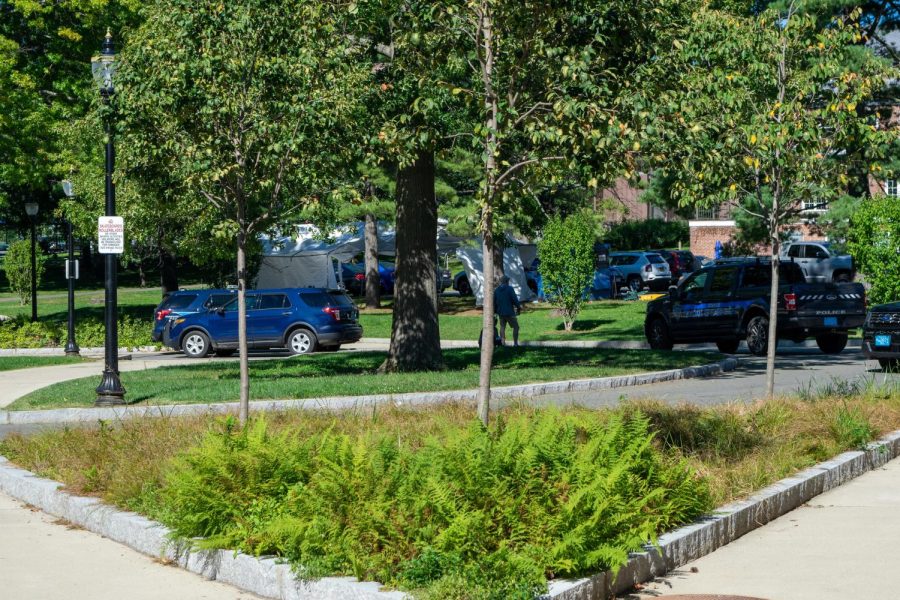
Hampshire Superior Court Judge Mary-Lou Rup denied a motion to have two charges against Patrick Durocher dropped in connection with an alleged 2013 rape, saying that the prosecution had presented sufficient evidence for these charges to be levied against the defendant.
Durocher, a former University of Massachusetts student, has been charged with aggravated rape, kidnapping and assault and battery in connection with an incident that occurred on campus in September 2013.
Durocher’s attorney, Vincent Bongiorni, had motioned for the charge of kidnapping to be dismissed and the aggravated rape charge to be reduced due to a lack of evidence that the alleged victim suffered a serious bodily injury or was forcibly restrained.
“There is really no evidence that the alleged victim received a serious injury of any kind,” Bongiorni said.
Assistant Northwestern District Attorney Jennifer Suhl said the claim that Durocher, who allegedly held the woman against a tree outside the Campus Center against her will, was strong enough for him to be charged with kidnapping. She also said there have been prior aggravated rape charges with less serious physical injuries than those suffered by the alleged victim.
“It’s clearly sufficient based on what has been upheld in the past,” Suhl said.
Rup denied both motions, saying that the prosecution had presented sufficient evidence for the jury to decide whether Durocher was guilty.
The trial continued Tuesday, as jurors heard testimony from six witnesses involved with either law enforcement or medical care.
Jurors have previously heard testimony from several witnesses that saw Durocher half-naked and laying on top of the woman outside the Campus Center on Sept. 2, 2013. The woman testified Thursday that Durocher raped her, but Bongiorni maintains she consented to the sex and only accused Durocher after images of the incident appeared on social media.
Erica Nadeau, an employee at the Massachusetts State Police Crime Lab in Springfield who examines sexual assault kits, was called to testify by Suhl.
Nadeau testified that she examined numerous vaginal and cheek swabs and underpants taken from the alleged victim, along with a condom found near the scene. While she said she did not find any traces of sperm cells or seminal fluid on the material tested, she said acid phosphate, the enzyme being tested to determine the presence of seminal fluid, degrades very quickly.
Pamela Condon, a physician’s assistant who worked at Cooley Dickinson Hospital when the woman went to the emergency room on the morning of Sept. 2, 2013, said she noticed asymmetrical bruising to the front of the victim’s neck and said that the alleged victim had a blood alcohol level of .251 after being tested in the morning.
Bongiorni questioned Condon’s recollection of the events, which occurred two and a half years ago, and asked Condon why the alleged victim had gone to the emergency room.
“The chief complaint of her visit was that she was the victim of a sexual assault,” Condon said she was told by the triage nurse on duty that night.
Jessica Hart, an employee of the DNA Unit of the Massachusetts State Police Department, testified that she tested swabs for DNA evidence from a condom found near Bartlett Hall, saying that three DNA profiles were found on its interior.
Hart said that the DNA profile of the alleged victim matched a female DNA profile found on the condom’s exterior, but that results for the testing of Durocher were less conclusive when she tested it in July 2014.
“Patrick Durocher could have been a contributor to the minor DNA profile in the mixture,” she said.
Lou Rios, a sexual assault nurse examiner employed by the Bay State Medical Center, was called to testify by the prosecution. Rios said she examined the alleged victim for signs of sexual assault the morning that the alleged rape took place.
The woman had tender bruising on her left inner thigh, a swollen inner vaginal wall and abrasions on her labia, Rios told the jury.
Rios also said that she saw a reddened area on the woman’s left elbow, red circular areas on her neck and chest and dark bruises on her right leg.
The woman told Rios that she had been penetrated against her will vaginally and orally, and that no condom had been used by the alleged rapist.
Bongiorni said that no mention of tender bruising could be seen in the medical note presented as evidence during Condon’s testimony, and that the alleged victim’s claim that a condom was not used contradicted the DNA profile found on the condom near Bartlett.
“She had the option of saying no, yes and unsure and she said no condom was used,” Bongiorni said.
Bongiorni called only one witness to the stand, Morris Leibowitz, a physician with Baystate Emergency Medicine.
Leibowitz, who reviewed the alleged victim’s medical record and was shown witness testimonies by Bongiorni, said that the alleged victim did not receive any specific medical treatment.
Suhl declined to cross-examine Leibowitz.
Rup said that she anticipated the presentation of the trial’s evidence would most likely finish Wednesday.
Stuart Foster can be reached at [email protected] or followed on Twitter @Stuart_C_Foster

















